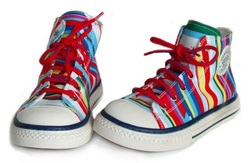 Cognitive empathy. I believe it 's the most valuable asset a teacher can possess to truly connect with her students. The reason I landed my first teaching job was because I could answer the question, "What is cognitive empathy?" Twenty years later I vividly remember the six teacher panel looking at me as the wheels were turning in my head. "Cognitive is thinking. Empathy is relating to ones emotions." I confidently responded, " Putting yourself in the students' shoes. Understanding what they are thinking so you can teach to their strengths and understanding." They paused, looked at each other and said, "You were our first candidate to answer that question." I didn't realize at that time how important and meaningful that question was for me. Unknowingly, upon reflection, I have practiced it everyday of my teaching career. It does not come easily, I must be mindful and practice it every day.
When I plan a lesson or activity, there are many factors to consider beyond the content and curriculum. I think of the high expectations I want my students to attain, but I also think of the learning styles and difficulties that sit before me daily.
I design reading, writing, and content assignments that are user friendly and can easily be broken into smaller chunks of information to be accessible. I think of engaging and motivating questions so students will connect and find relevant meaning to the information. I come up with mnemonic devices to help learn information. I sit next to students. I talk to them and observe them so I can best understand them. Everyday I put myself in the shoes of 23 different students and think what approach would help them understand and succeed.
The brain is the most fascinating organ. I love trying to figure out the puzzle of each child's unique brain. It's always changing, challenging, but also rewarding to see a student succeed. Because isn't that really what all kids want?
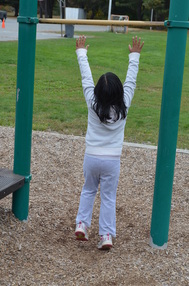 When we raise the bar, kids reach for it. They push themselves and excel. And when they do reach it, it gives them great reason to celebrate! Reason for celebrating the hard work, and perseverance. In turn kids gain a sense of accomplishment, self-confidence and reason to believe in themselves. Recently on the playground when my daughter faced two bars. She easily reached the lower of the two, hung upside down, jumped off and was done. It was easy for her and there was no sense of accomplishment. No reason to celebrate. Then she stood before the high bar and reached. It was too high to get a hold of. I could sense the wheels turning, "How can I get up there?" She began to stand on her tip toes and wiggle her fingers. She still couldn't reach. Attempt after attempt she thought, she tried and she failed, but did not give up. She reassessed and she watched others. With encouraging words, determination, the belief that she could succeed and days of visiting the playground she proudly ran over to me, "Mommy, watch me. I can do it!" The hard work paid off. Watching the process of kids working through tasks that are hard for them and then succeed is exactly why I raise the bar in my classroom. I want to see my students ponder, work hard, reach high and not settle for the easy way out. I expect them to fail sometimes because when we accomplish tasks with hard work we have reason to celebrate, to give high-fives, smile and feel good about ourselves. We must believe in our children, and they will believe in themselves. During science students were to read a non-fiction selection on the stem of plants and answer questions. As it had been modeled in class, they were expected to record answers in complete sentences using content vocabulary. Every single student needed to reexamine their work. I could have thought, "This is too hard for them" and move on since all students struggled with the expectations. But it was not out of their reach. Yes, they had to work harder, reread, rethink and rewrite, but it was an attainable goal. Some students fixed their errors in one attempt, for others it took a number of times. Yet, students were not discouraged because they knew I believed they could do it. I gave support, encouragement and strategy to help them succeed. All the kids persevered to complete the assignment as expected and were proud of their accomplishments. We gave high fives, we cheered, and they definitely had reason to celebrate. I believe all learners need to be held to a high standard. We must raise the bar, and help them until they reach it. As a result we will begin to see students believe in themselves and expect more from themselves. A GREAT REASON TO CELEBRATE!
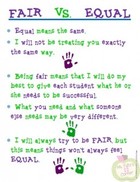 "That's not fair.” We've all heard either our own or someone else's child claim those very words when they are not getting what they want or receive the same amount of (food, attention, playing time) as someone else. It is often misunderstood, especially by children, what fair really means. To help the students understand the difference between fair and equal, we first demonstrated some scenarios, then brainstormed everyday examples and finally connected their understanding to classroom learning. I started by taping a dollar bill on the top of the white board. I asked a tall student and a student on the shorter side to come up to the board and said whoever claims the bill first can keep it (not for keeps). Everyone laughed knowing Jack would quite easily reach the bill and remove it from the board before Charlie. Charlie was jumping up and down trying to come into reach with the dollar. Kids began shouting, “That’s not fair!" Jack is taller than Charlie; of course he is going to get it. He doesn’t have a chance" "How can we make it fair?" I asked. "Charlie could use a step stool or chair." “Okay, let's try again.” After they both reached the dollar simultaneously, we discussed that now that they were about the same height, it was in fact fair. Since Charlie was given what he needed he was not at a disadvantage. It was then pointed out that fair is not about what you WANT, but what you NEED. YES! And that is how we will treat each of them in the classroom, not necessarily equally, but always fairly. To be fair, we will give each of the students what they need to succeed in the classroom. Some students will get a "step stool", while others may not need it. For our next demonstration a sentence was written on the board. Ms. Frenkel read it with ease while I struggled to decipher the words. I was not given the boost I needed, my glasses."That's no fair." True and we would never deprive a student what they need to succeed, ever. Kids caught on quite quickly and brainstormed other everyday situations where people are not always treated equally, but treated fairly. - Babies, kids and adults will not be served the same amount of food because our calorie intake and nutritional needs are different.
- A child learning to ride a bike will use training wheels, while someone who already knows how to balance will not use training wheels.
- Someone who is afraid of the dark may use a night light, but not all people need night lights.
Once the students could visualize various ways in which people are not treated equally, and also understand it was fair (in everyday situations). It was easier for them to see fairness in the classroom setting. - It is fair that some students use the computer and others use paper.
- It is fair if students meet with Ms. K or Ms. F., but others don't.
- It is fair if some students use "offices" to do their work and others don't.
- It is fair if some students work on a project while others work on skill sheets.
These are fair because it is what the student needs to learn, practice and succeed. When all students get what they need to learn in our classroom, then our classroom is in fact an environment where everyone is treated fairly. All things are not equal in our classroom, but they are fair!
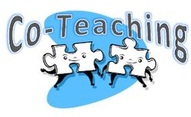 It is important to teach fairness to any group of students, but in a class where 1/3 of the class have learning disabilities it is imperative to make it clear that we will be fair so all students get what they need to tackle their challenges and be successful in their learning, And there certainly will not always be an equal share of your teachers' time. (This is a great follow up lesson after Strengths and challenges)
Children of special needs are often afraid of appearing different than others, or being treated differently in the classroom. So from the very beginning we discuss how we are all different, and how we all have different needs. When students understand fairness in terms of getting what they need, they don't feel so different.
A co-teaching classroom is set up differently than most classrooms. Students have two teachers always observing and helping. Students need to know from the beginning that Ms. Frenkel and I are both their teachers, and just as we are going to treat them fairly they must also treat us fairly. What one teacher tells a student is what both teachers agree upon. There is no manipulation. Sometimes our time in the classroom or spent with students may not appear “fair” or “equal”, but it is fair because it is what we each need to be effective and supportive teachers.
Although I did not catch this season of So You Think You Can Dance, it is one of my favorite reality television shows. I love to watch the passionate and dedicated dancers challenge themselves to learning new dance styles and steps with new partners.
Listening week after week to the judges' critique, I realize that it is the dancers' fluidity of movements, creativity, emotions, their connection with both their partner and audience, the knowledge and ability to perform technically in addition to knowing how to lead or follow is what keeps me glued to the performances. Dancing is a beautiful art. just as teaching is.
For co- teachers to be effective, we must learn to dance with one another. We must connect, be flexible, creative, lead, and follow. While I love to watch dancing, I am not a dancer, and it appears that my co-teacher and I are not good dancing partners either, YET.
We have been dancing partners for a mere few days and we are stepping on each other toes. When one is leading the dance, the other is struggling to follow the lead. It
will take practice. We have to build a relationship of trust and honesty, so there is a genuine connection. We have to get to know each others teaching styles, so our teaching can be fluid. We have to be open-minded and willing to learn from each others' years of experiences, and strengths in teaching so our teaching complements each other. During a lesson we need to learn and feel each others moves. We need to have a connection with one another and anticipate each others movements. When one leads a lesson the other needs to sense the direction the lesson is taking and follow. As any good performers we need to reflect and refine our dance moves.
I naively hoped and thought our dance would be a piece of art from the beginning and we would fall right into step together. I was quickly brought back to reality. Co-teaching, just as dancing, takes hours, years, months, even years of practice. It will be a challenge. We can plan, and create the perfect lesson, but the challenge is that practicing our teaching is actually a live performance every time. When we fail it is in
front of our audience, our students, and we must quickly get back on track and
continue the dance of teaching. It can be frustrating, but we can't let the
audience sense it. We put a smile on our faces and continue the dance. I believe
it is a challenge worth pursuing because in my opinion co-teaching is the best
teaching practice to reach the diverse needs of all learners.
I am optimistic and determined that we WILL be successful partners because we have passion for teaching, and a dedication to children. We plan, we talk, we read and we are eager to continue our adventure of learning to dance.
|







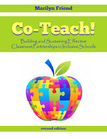
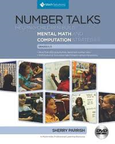


 RSS Feed
RSS Feed